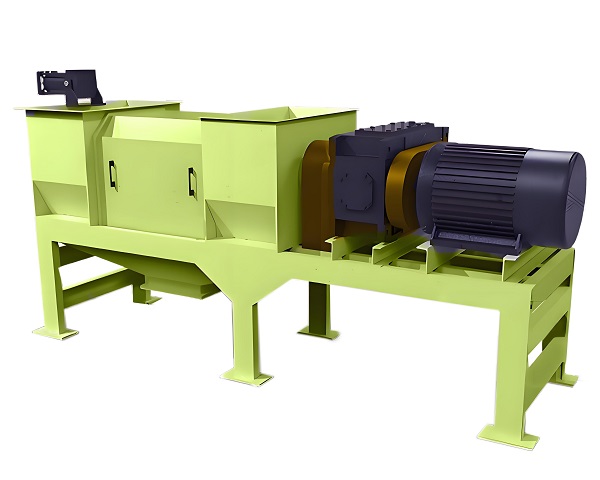
Screw dehydrator, also known as screw press dehydrator, is a kind of equipment commonly used for solid-liquid separation. It adopts the working mode of continuous feeding and continuous slag discharge, and uses the rotating screw shaft to separate the solid and liquid in the mixture. The screw dehydrator has the advantages of simple structure, convenient operation, high processing efficiency, low energy consumption, and convenient maintenance. It is widely used in food processing, petrochemical, sewage treatment, papermaking, agriculture and other fields.
The spiral dehydrator (screw press dehydrator) is an efficient solid-liquid separation equipment. It is widely used in many fields such as environmental protection, agriculture, food processing, chemical process, pulp and paper making, beverage alcohol industry and biomass energy. It is an important tool for material dehydration, waste treatment and resource recycling. The following is a detailed introduction to the spiral dehydrator:
The spiral dehydrator is based on the relative movement between solids and liquids, and uses mechanical force and centrifugal force to separate the solids and liquids in the mixture. Its working process can be divided into three stages: feeding, dehydration and slag discharge:
1. Feeding stage: The mixture enters the spiral cavity of the spiral dehydrator through the feed port. A spiral blade is designed inside the spiral shaft, and the function of the blade is to gradually push the mixture from the feed port to the discharge port. In this process, the rotation of the spiral blade will apply mechanical force to the mixture, which helps to initially separate the solid particles from the liquid.
2. Dehydration stage: As the spiral shaft continues to rotate, the solid particles are pushed to the outside of the spiral shaft under the action of centrifugal force and gradually move along the direction of the spiral blade. In this stage, the gaps between the solid particles gradually decrease, so that the liquid is gradually discharged, and then a relatively dry solid material is formed.
3. Slag discharge stage: When the solid material moves to the end of the spiral shaft, due to the shape of the spiral blades and the inclination design of the spiral shaft, the solid particles will gradually approach the center of the spiral shaft to form a slag discharge groove. Under the action of the slag discharge groove, the solid material is smoothly pushed out of the equipment, and the clean liquid flows out from another discharge port.
Structural features of the spiral dehydrator:
The structure of the spiral dehydrator usually includes parts such as a screw, a cylindrical cage shell and a cone, which work together to achieve efficient solid-liquid separation. Its main structural features are as follows:
Screw: The screw is the core component of the spiral dehydrator, usually composed of a segment thread and a shaft ring alternately sleeved on the screw shaft. Each segment thread and shaft ring are fixed to the screw shaft with a key to ensure its stability and durability.
Cylindrical cage shell: The cylindrical cage shell is another important part of the spiral dehydrator. It wraps around the outside of the screw to form a closed dehydration chamber. The outer shell is usually provided with a drain port to discharge the separated liquid.
Cone: The cone part is located at the end of the spiral shaft, and its design and inclination angle facilitate the smooth discharge of solid materials. At the same time, the cone can also move forward and backward as needed to adjust the area of the outlet sharp hole, thereby changing the pressure in the machine and adjusting the dehydration rate.
The application field of spiral dehydrator is wide, including but not limited to the following aspects:
1. Environmental protection: In sewage treatment plants, spiral dehydrators are often used for sludge dehydration to reduce the moisture content of sludge and facilitate subsequent treatment.
2. Agriculture: In the agricultural field, spiral dehydrators can be used for dehydration of agricultural products and feed to improve their storage and transportation convenience.
3. Food processing: In the food processing industry, spiral dehydrators are often used in fruit and vegetable juice extraction and food waste treatment.
4. Chemical process: In chemical process, spiral dehydrators can be used in chemical wastewater treatment and solid waste treatment.
5. Pulping and papermaking: In the pulping and papermaking industry, spiral dehydrators are often used for pulp dehydration and waste paper recycling.
6. Beverage and alcohol industry: In the beverage and alcohol industry, spiral dehydrators can be used for wine lees treatment and alcohol dehydration.
7. Biomass energy: In the field of biomass energy, spiral dehydrators can be used for biomass pellet dehydration and biomass waste treatment.
Spiral dehydrators have many advantages and characteristics, which make them widely used in the field of solid-liquid separation:
1. High processing efficiency: The spiral dehydrator can quickly separate the solids and liquids in sewage or mixtures, improving production efficiency.
2. Low energy consumption: Due to its simple structure and easy operation, the energy consumption of the spiral dehydrator is relatively low, which helps to reduce operating costs.
3. Convenient maintenance: The spiral dehydrator has a reasonable structural design and is easy to maintain, which can extend the service life of the equipment and reduce maintenance costs.
4. Wide range of applications: The spiral dehydrator can handle various types of mixtures and materials, suitable for different industries and fields.
PS: The spiral dehydrator plays an important role in the field of solid-liquid separation with its advantages such as high efficiency, energy saving, easy maintenance and wide application range. With the continuous advancement of technology and the continuous expansion of application fields, the spiral dehydrator is expected to be applied and promoted in more fields.
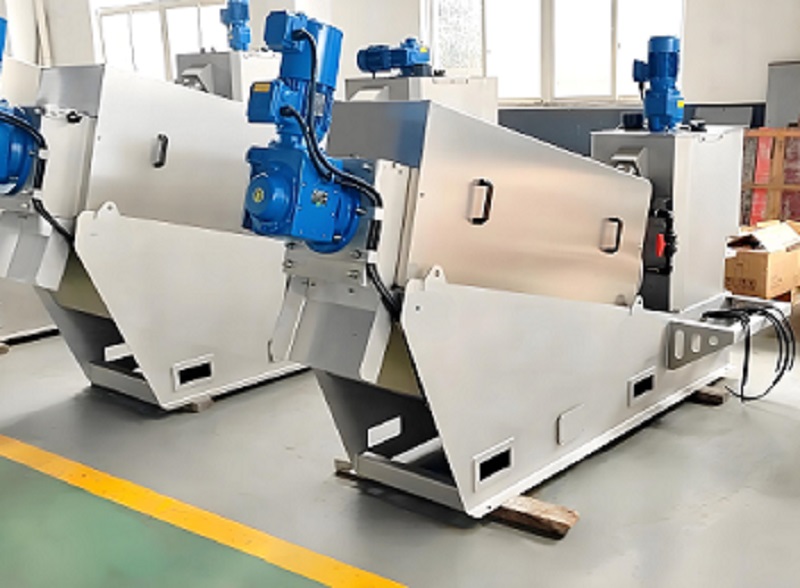
1. Select according to the type of material: First determine the type of material to be processed, such as sludge, fruits and vegetables, pulp, lees, etc. Different materials have different physical and chemical properties, such as particle size, stickiness, moisture content, etc., which will directly affect the selection of the dehydrator and the dehydration effect.
2. Select according to the initial moisture content: Understanding the initial moisture content of the material is crucial to choosing a suitable dehydrator. Materials with high moisture content may require stronger dehydration capabilities.
3. Select according to the material processing volume: Estimate the amount of material that needs to be processed per unit time based on actual needs. Choose equipment with appropriate processing capacity to avoid waste or failure to meet demand due to excessive or insufficient processing capacity.
4. Understand the range of mechanical processing capacity: The processing capacity of the spiral dehydrator will vary depending on the machine specifications and material properties. Generally speaking, the production capacity of the spiral dehydrator for processing fruits and vegetables is between 200-1000kg/h, and the production capacity of the spiral dehydrator for processing fiber materials is between 1000-2000kg/h.
5. Understand the diameter and length of the spiral shaft of the dehydrator: The diameter and length of the spiral shaft will affect the processing efficiency and dehydration effect of the machine. Generally speaking, the larger the spiral diameter, the higher the processing efficiency, but it will also increase the volume and cost of the equipment.
6. On-site test machine: If conditions permit, the manufacturer can be invited to conduct an on-site test machine to more intuitively understand the performance and processing effect of the equipment.
Adopting a fully enclosed connection with good sealing effect, it can ensure that sludge, wastewater, and odors do not leak out of the casing.
Adopting variable frequency drive, the speed can be adjusted according to the material, and the material adaptability is wide.
The tail of the slag discharge adopts air pressure regulation to adjust the extrusion pressure of the material, which is easy to maintain and easy to control.
High compression ratio, high dehydration rate, and no blockage or entanglement, allowing for continuous production.
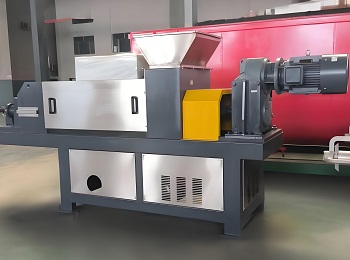
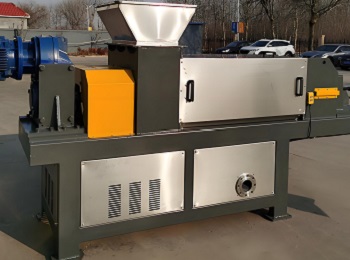
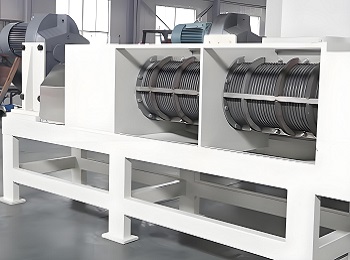
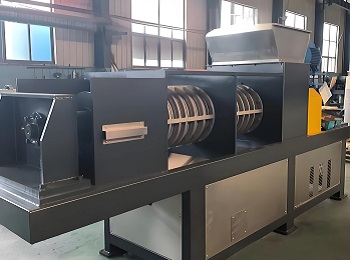
Screw Dehydrator is a main equipment for coagulation and dehydration. Its working principle can be summarized as follows:
1. Feeding and preliminary compression
The material first enters the interior of the screw dehydrator through the feed hopper. In this process, the material begins to be subjected to the initial compression of the screw.
The screw is usually composed of multiple threads and collars alternating, each of which is fixed on the screw shaft. The design of these structures allows the material to gradually move forward and be compressed under the push of the screw.
2. Screw extrusion and dehydration
As the materials advance on the screw, they enter the screw extrusion area. In this area, the material is subjected to stronger compression and the volume gradually decreases.
The design of the screw shaft (such as the tapered screw shaft and the variable diameter screw) allows the material to be continuously sheared and compressed during the advancement process, so that the moisture in the material is quickly separated through the porous filter cartridge.
During the dehydration process, the moisture content of the material gradually decreases, forming the filter cake or dry material we need.
3. Discharging and adjustment
The dehydrated material is discharged out of the machine under the conveying action of the screw. The design of the discharge area usually includes components such as a conical cylinder and a cutter, which can further adjust the dehydration rate and discharge state of the material.
For example, the area of the outlet sharp hole can be changed by adjusting the front and rear positions of the conical cylinder, thereby adjusting the pressure and dehydration rate in the machine.
The cutter is used to cut the dehydrated material into small pieces for subsequent processing or storage.
4. Auxiliary system
The screw dehydrator may also be equipped with some auxiliary systems to improve the dehydration effect and equipment performance. For example, a heating or cooling jacket is provided on the outside of the cylinder, which can control the temperature in the machine according to the process requirements.
These auxiliary systems help optimize the dehydration process and improve the dehydration efficiency and quality.
In general, the Screw Dehydrator separates the moisture from the material by screw extrusion to achieve the purpose of dehydration. Its working principle is simple and efficient, and it is widely used in the dehydration of various high-humidity materials.


| Model | Processing Capacity(m³/h) | Power(kW) | Dehydration Rate(%) |
| ZCP | 5-20 | 15-37 | 20-50 |
*The output will vary according to different materials, feed particle size and other factors.
Save Time! Get A Detailed Quotation Quickly.
